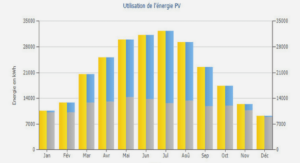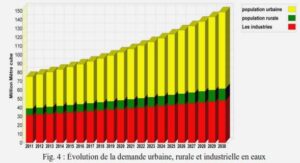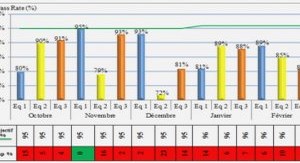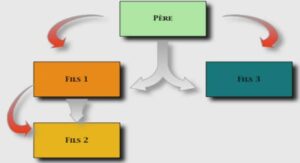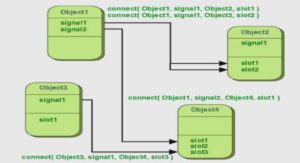Theoretical introduction to IF NMR and nanomagnetism
This first chapter is dedicated to the description of the theoretical principles of nuclear magnetic resonance (NMR), internal field (IF) NMR in particular. In Section 1, the general principles of NMR are briefly introduced. In Section 2, more details about IF NMR and what distinguished this technique from classic NMR are given. This includes a description of the excitation mechanisms and an introduction to the so-called enhancement factor, both for the case of magnetic domains and domain walls. Using the Bloch equations for a coupled nucleus-electron system allows to determine an expression of the resonance frequency and give more details about the signal enhancement. As the IF NMR frequency depends on the magnitude of the internal field, the different terms influencing the internal field inside a Co nucleus are described in Section 3. Besides the Co crystalline structure and influence of nearest neighbor atoms, the sample shape also has an influence. Finally, Section 4 contains an overview about how the size of a nanometric structure can have an influences on its magnetic properties. This section includes discussions about the magnetic anisotropy energy, superparamagnetism and the formation of magnetic domains and domain walls. The information from the two latter sections is crucial for the interpretation of IF NMR spectra and to understand the full capacity of this technique. Before going on, readers that are not familiar with the concepts of the magnetic induction (𝐵), the magnetizing field (𝐻) and magnetization (𝑀), are invited to read the introduction to these terms in the Appendix.
Brief introduction to NMR
Before explaining the particularities of IF NMR, a general introduction to the principles of NMR will be given. This should help the general reader to better understand the terms used in the following. During an NMR analysis, the chemical environment on a nucleus is probed via the resonance frequency of the nuclear spins, which are exposed to a magnetic field (an external field 𝐵0 in case of classic NMR). For non-zero spin isotopes, the interaction between the nuclear spins and the magnetic field generates an equilibrium of the nuclear magnetization alongside the magnetic field. Without removing this external magnetic field, the nuclear spins can be deviated from this equilibrium by a magnetic radiofrequency (rf) pulse with a frequency equal (or close) to their resonance frequency. This resonance frequency (Ω0) depends on the gyromagnetic ratio of the nucleus (𝛾𝑛, an intrinsic property of the nucleus) and the intensity of the magnetic field seen by the nucleus 𝐵0: Ω0 = 𝛾𝑛𝐵0 (1. 1) This frequency is also called the Larmor frequency. Out of equilibrium after the pulse, the nuclear magnetization will start a precession around the magnetic field at a frequency equal to the Larmor frequency Ω0, as shown in Figure 1. In classic NMR, the presence of electrons in the environment of a nucleus will slightly modify the magnetic field seen by the nucleus by creating a small local internal field (𝐵𝑖𝑛𝑡) in response to 𝐵0, which will have an influence on the resonance frequency. For dia- or paramagnetic materials, this difference is typically around − 4 times smaller than 𝐵0, but allows to distinguish different environments of the atom.
Introduction to the particularities of IF NMR
In the upcoming section, a theoretical introduction to the principles of internal field (IF) NMR experiments in ferromagnets and the differences to classical NMR experiments is given. Most of the information described in the rest of this section was taken from books written by E.A Turov and M.P. Petrov : Nuclear Magnetic Resonance in Ferro- and Antiferromagnets (1972) [2] and by A.P. Guimarães : Magnetism and Magnetic Resonance in Solids, p.7 – 242 (1998)[3], where additional details can be found as well. Letters in bold correspond to vectors. 2.1. Vector model The general principles of IF NMR are similar to those of usual NMR on diamagnetic/paramagnetic materials, with the difference that the ferromagnetic material under consideration is not linear from the perspective of electromagnetism and that a significant internal magnetic field (𝐵𝑖𝑛𝑡) is acting on the nuclei. In absence of a static (i.e., external) field 𝐵0, it is solely this internal field that is responsible for the polarization of the nuclear spins and around which the nuclear magnetization precesses. A detailed expression of this internal field in ferromagnetic materials is presented in Section 3 of this chapter. A first consequence of this is the observation of peaks much broader than the ones observed for dia- and paramagnetic materials. The internal field is naturally inhomogeneous, resulting in a quite large distribution of the magnetic field seen by the probed nuclei. Secondly, this internal field is not static and will interact with the nuclear magnetization, as well as with the radio frequency (rf) field used to probe the resonance frequencies of the nuclear spins. This leads to interesting properties that are specific to IF NMR. An additional point that needs to be mentioned is the orientation of the internal field and consequently of the nuclear magnetization with respect to rf excitation field. In the case of NMR with an applied Chapter 1: Theoretical introduction to IF NMR and nanomagnetism external field, the direction of the rf field is chosen to be perpendicular to this field, in order to have the most efficient excitation of the nuclear magnetic moment. In the case of IF NMR on the other hand, the orientation of the internal field potentially varies from one nucleus to the other and so does the orientation with respect to the rf field. This does not influence the resonance frequency but will decrease the excitation efficiency for most nuclei. The optimal excitation is therefore a mean value over the whole sample. The case of an oriented sample will be discussed in Chapter 5. Domain excitation A difference between classic and IF NMR can be observed during the excitation of the nuclear magnetization. In contrast to classic NMR, during IF NMR the nuclear magnetization is not directly excited and tilted away from its equilibrium by the rf pulse 𝑩1𝑒 𝑖𝜔𝑡. Instead, the excitation is due to a time dependent transverse component of the internal field, arising from the rf pulse and therefore having the same frequency. The origin of this transverse component is shown in Figure 2. Initially, the nuclear magnetization 𝒎 is aligned with the internal field 𝑩𝑖𝑛𝑡, which itself is colinear with the electronic magnetization 𝑴, but of opposite sign. 𝑴 is aligned with the anisotropy field 𝑩𝑎 1 , and at equilibrium both define the quantification z-axis (left on Figure 2). As the transverse rf field is applied, 𝑴 reorients along 𝑩𝑎 + 𝑩1𝑒 𝑖𝜔𝑡 and an oscillating transverse component appears. This transverse component is small, but measurable, and depends on the strength of the magnetic anisotropy (~𝐵𝑎) of the material. The frequency of the applied field is chosen close to the resonance of the nuclear magnetization and therefore far from (i.e., much lower than) the resonance frequency of the electronic magnetization. As a result, 𝑴 can be considered to respond adiabatically to the rf field and oscillates with the same frequency. Consequently, an oscillating transverse component of the internal field 𝑩𝑖𝑛𝑡 ⊥ arises as well, which is responsible for the excitation of the nuclear spins and orders of magnitudes higher than the rf field. In cobalt magnetic domains, 𝜂 is typically around -0. The higher the enhancement factor, the less power is needed for an optimal excitation of the nuclear spins, which gives an indication about the strength of the magnetic anisotropy of the material.[3] Reciprocally to the indirect excitation of the nuclear spins, the observed signal also does not come directly from the precession of the nuclear magnetization. Instead, it is the oscillation of the electronic magnetization, induced by a torque exerted by the precessing nuclear magnetization, that is observed. Besides a reduction in the power needed for the excitation, the enhancement factor thus also results in a sensitivity increase of the IF NMR. This simplifies the measurements but as a drawback, the amplitude of the observed signal does not depend directly on the number of nuclei in a certain environment, but also on the enhancement factor in that environment. The enhancement might vary inside a single sample and therefore needs to be taken into account when doing a quantitative analysis.
Domain wall excitation
The above description of the enhancement factor was about the case of magnetic domains. In reality, magnetic materials tend to be composed of not only a single magnetic domain, but to divide themselves into multiple domains, with so-called domain walls in between them. More information about the conditions of domain wall formation and their parameters can be found in the subsection 4.3. Within domain walls, an even more efficient enhancement effect than inside domains takes place. In the right of Figure 3, the response of a 180° domain wall to an external magnetic field parallel to one of the domain directions is represented. The increase/decrease of the domain size with magnetization parallel/antiparallel to the external field causes a domain wall displacement. While under a static field this displacement is permanent, the application of an external rf field causes the wall to move back and forth due to the periodic change of direction of the external field. As illustrated in the right of Figure 3, this displacement corresponds to a rotation of the magnetic moments inside the domain wall, leading to an additional component of the magnetization (𝚫𝑴), and consequently also of 𝑩𝑖𝑛𝑡 acting on the nuclei, in the direction of 𝑩1. Consequently, the part of 𝑩𝑖𝑛𝑡 that is created alongside 𝑩1 is much bigger in the case of domain walls, than it is for simple domains, causing the 𝜂 to take values from 00 up to .000.[4], [5] As it can be seen, 𝚫𝑴 and therefore also the enhancement are not constant and depends on the position inside the domain wall; it is maximum in the center and decreases towards the edges.
General introduction and context of the study |
